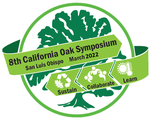#62

Context-dependent Effects of Cattle and Wildlife on Floral Resources at Tejon Ranch in Southcentral California
Devyn A. Orr, USDA Agricultural Research Service
Michelle Lee, Department of Ecology, Evolution, and Marine Biology, University of California Santa Barbara; Maggie Klope, Department of Ecology, Evolution, and Marine Biology, University of California Santa Barbara; An Bui, Department of Ecology, Evolution, and Marine Biology, University of California Santa Barbara; Hillary Young, Department of Ecology, Evolution, and Marine Biology, University of California Santa Barbara
Oak woodlands are one of California’s most iconic landscapes, providing both diverse and critical habitat to native plants and wildlife, as well as important ecosystem functions. However, oak woodlands are highly threatened by human activities, such as increasing grazing pressure and climate change. Large herbivores, including cattle, are well-known ecosystem engineers, and can have myriad impacts on plants and other wildlife, with cascading effects on key ecosystem services. One such service is the provisioning of floral resources. Although moderate herbivory can sometimes promote plant diversity, potentially benefiting pollinators, large herbivores might alternatively reduce resource availability for pollinators by consuming flowers or other plant reproductive tissue, promoting somatic regrowth over reproduction, or reducing plant density. The direction and magnitude of such effects may hinge on 1) abiotic context—such as weather or climatic conditions—which can modulate the effects of ungulates on vegetation, and 2) herbivory identity, density, and selectivity. Using a large-scale experiment replicated across a topoclimatic gradient at Tejon Ranch in southcentral California, we show that both wild (deer, elk) and domestic (cattle) large herbivores can either enhance or limit flower abundance, diversity, and landscape-scale nectar availability, but impacts are complex and vary tremendously across abiotic contexts. Cattle presence generally had a positive effect on floral resources under more arid conditions and a negative effect under wetter, cooler conditions, and varied from isolated effects of wildlife. Effects appear driven largely through indirect pathways, notably altered dominance and competition among plant species. Our results show that 1) moderate grazing may benefit plants and their pollinators under drier conditions; 2) conservation of wild herbivore populations may have the dual benefit of helping to protect floral resources; and 3) large herbivore management in oak woodlands must be considered simultaneously with other perturbations, notably climate change. These findings have important implications for the management and protection of plant and pollinator biodiversity given that nearly 80% of California’s oak woodlands are managed for livestock and climate regimes are changing globally.
